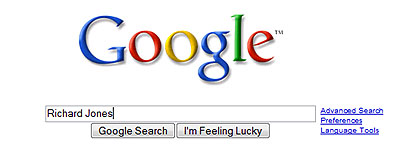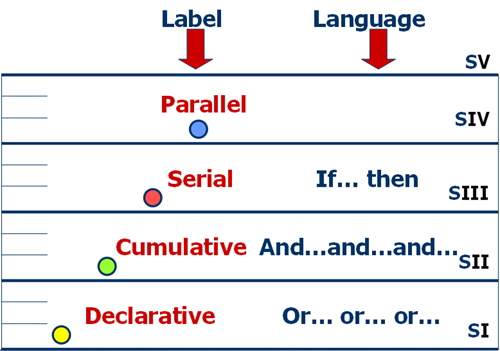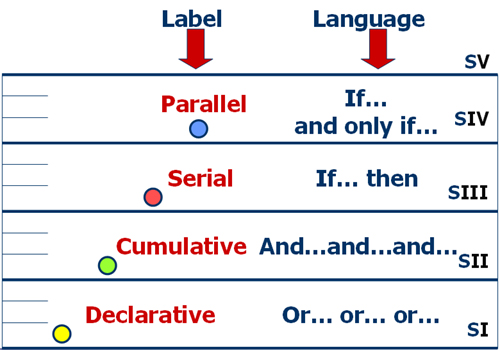Time Span and Boolean Logic
To better understand the differences of thinking patterns between Stratum I, II, III and IV, I always ask, “Who has experience with computer programming, more specifically Boolean logic?” There is an occasional smattering of hands, yet, everyone with a computer actually uses Boolean logic. If you use a Google search engine, you are using algorithms based on Boolean logic.
As a side note, you might be happy to know that Elliott was not a computer programmer, but in the late 80’s, its logic was explained to him along with some curious correlations.
Let’s put something into our Google search box, Richard Jones. By my last count, that returned 9,820,000 responses. This sounds a bit outlandish until you understand how the logic works. In that list of 9,820,000, you get every Richard or every Jones. At the top of the list, Richard Jones may be connected, but as the list goes on, Richard does not have to be connected to Jones and Jones does not have to be connected to Richard.
Granted, to make its search effective, Google uses many algorithms, some of which are secret.
But this example illustrates the first mathematical operator in Boolean logic –OR-. It is either Richard OR Jones.
When Elliott heard this, his ears perked up. If you remember, to determine the Stratum of a person, he used language analysis to determine the cognitive thinking pattern. He admitted that while many thought his diagnosis depended on his analysis of the content of the argument, he mostly listened to how the argument was put together. He mostly listened for conjunctions. The conjunction he was listening for in a Stratum I logical argument was the conjuction OR. “It’s either this possibility, or this possibility, or this possibility. I don’t know, pick one. If that one doesn’t work, pick another.”
Second Operator in Boolean Logic
So, let’s say we want to get closer to the Richard Jones sitting in the room. How would we tell Google to narrow the search?
We would insert a word between the two words that tells Google to restrict the search using the second mathematical operator of Boolean logic, the operator -AND-.
Now, Elliott knew he was on to something. His criteria for identifying a Stratum II logical argument was the conjunction AND. Stratum II is a cumulative pattern, putting things together, perhaps to solve a problem.
Stratum II is the land of connection, adding things together.
Third Operator in Boolean Logic
The third mathematical operator of Boolean logic is the “If… then” statement.
“If this is the case, then this must be the result.”
Cause and effect thinking. This is precisely the logic Elliott observed when he identified a Stratum III logical argument.
The expectation of the highest thinking patterns of Stratum III managers is that they are capable of seeing true cause and effect in events and sequences.
Fourth Operator in Boolean Logic
The fourth operator in Boolean Logic is the bi-conditional “If… and only if… then” statement.
“I will borrow money from the bank, if I need it and only if my bank will allow it under the terms of my Line of Credit.”
Two conditions or more, precisely the logic Elliott was listening for when he identified a Stratum IV logical argument.
While it may be helpful to remember the descriptive Labels or to remember the similarities to Boolean logic operators, the most important element to remember is that each Stratum thinks differently. The patterns of thought are as different as ice is to water is to steam.
These cognitive thinking patterns give us, as managers, clues to understand why people learn in different ways and solve problems in different ways.







very good information about boolean logic!